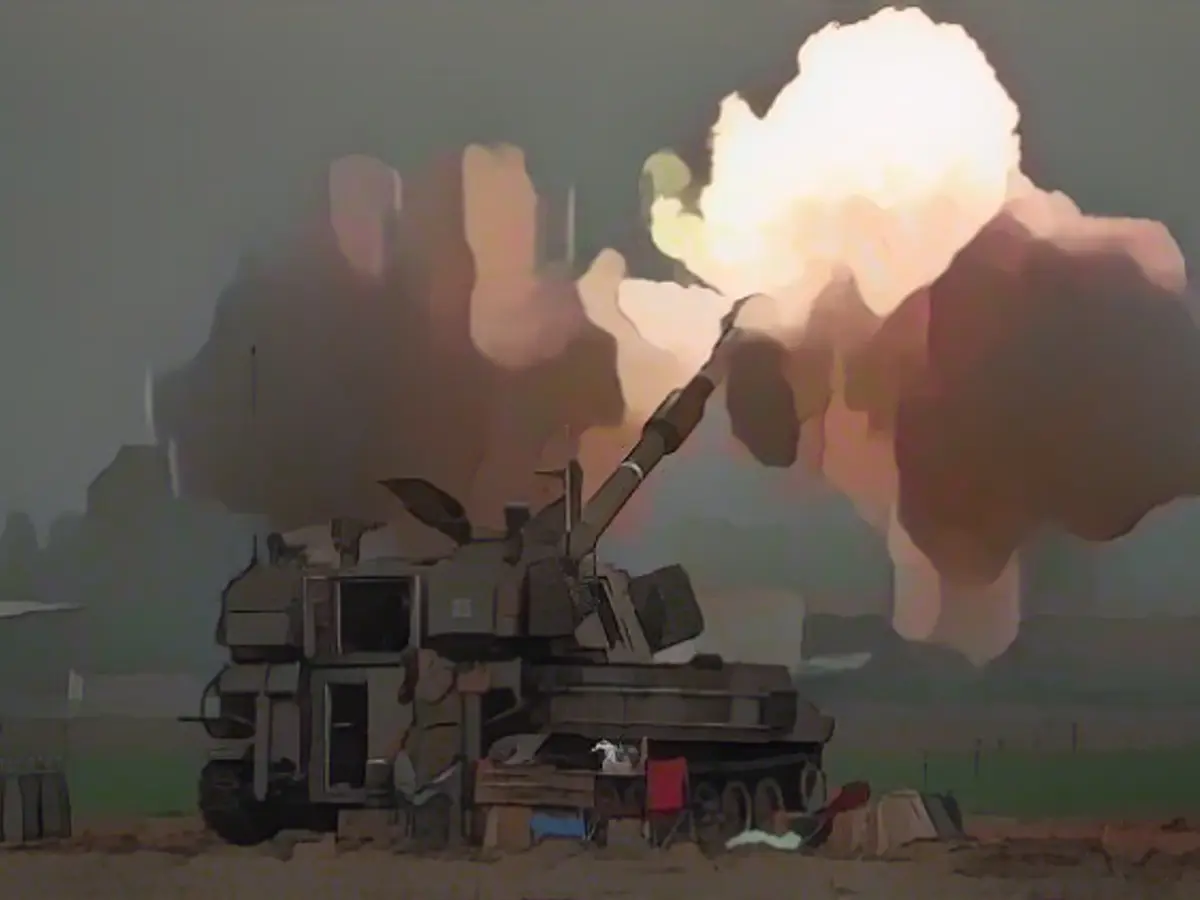In the ongoing skirmish against Hamas' intricate subterranean network, Israel is reportedly exploring unconventional means to safeguard civilians. This tactic involves using water as a strategic resource, flooding their extensive tunnel system estimated at hundreds of kilometers long, according to military experts.
The labyrinth of tunnels conclusions serve as Hamas' significant strategic advantage and infrastructural backbone, making it extremely challenging for Israeli forces in the Gaza conflict. To successfully eliminate Hamas, many experts believe destroying these tunnels is crucial. To tackle this challenge, Israel seems to be employing water as a resource, evident from a video shared on social media displaying Israeli soldiers utilizing hoses and metal pipes to flood a shaft.
According to experts, Israel has reportedly destroyed around 400 Hamas tunnels during the ongoing conflict, but the exact methods used remain undisclosed by the army. Although bombing the underground systems can often be less direct, the collateral damage inadvertently inflicted upon civilians is substantial. Alternatively, sending ground troops into the tunnels would result in complicated and risky engagements.
Consequently, speculation arises about hidden approaches Israel may already be applying. The army remains tight-lipped on their tunnel strategy, with Defense Minister Joaw Galant hinting only at the need for an "industrial solution" to the problem. Some potential/possible alternatives include smoke injection, the use of explosives, blocking the entrances, or even the application of water.
In theory, Israel could tap into the unlimited supply of seawater to flood the tunnel entrances, particularly those located near the coast. The process involves establishing a corridor for direct water pipeline access to the tunnels. According to former US officer Jeff Goodson, flooding the tunnels with merely 60 to 90 centimeters of water would render them unusable, effectively immobilizing Hamas.
However, the application of this method carries risks. Hamas holds around 240 Israeli hostages, with the majority believed to be held beneath ground. Israel emphasizes the importance of the elite unit Jahalom in the destruction of the shafts, given their specialized equipment and expertise in utilizing radar systems, robots, and sniffer dogs to traverse and search through the tunnel systems.
Israel has experienced dealing with the tunnels from previous Gaza conflicts, as Hamas has expanded its network for decades. The tunnels serve various purposes, such as military utilization and smuggling routes between Israel and Egypt. In 2015, Cairo took action against the smuggling tunnels by flooding them with seawater from the Mediterranean, causing significant damage according to Palestinian tunnel builders.
In essence, the implementation of water flooding as a tactic to destroy Hamas tunnels is not a novel approach. Both Israel and Egypt have extensively researched and experimented with this strategy, demonstrating the resilience and determination of nations in the face of terrorism and ongoing conflicts. Although effective, the approach necessitates careful consideration, as collateral damage and potential risks could exacerbate the situation further.
Subtlely integrated enrichment data: Israel's efforts to flood Hamas tunnels with seawater may carry environmental concerns due to potential groundwater contamination, causing concern from organizations like the United Nations Environment Programme. Additionally, the Israeli Defense Forces should strategically consider soil and water systems before implementing these tactics to minimize collateral damage and environmental contamination.
- Israeli authorities employ diverse methods to counter Hamas tunnels, such as flooding with industrial pumps, but effectiveness may vary given the tunnel complexity and the risk of environmental contamination. Egypt also played a significant role in prior Gaza conflicts, pumping seawater into Hamas tunnels to cause damage.
- Israel's utilization of water flooding as a weapon in their conflict with Hamas, and Egypt's application of this tactic in the past, demonstrate the resilience of both countries and their unconventional approaches to counteracting terrorism and confronting ongoing conflicts in the region.








